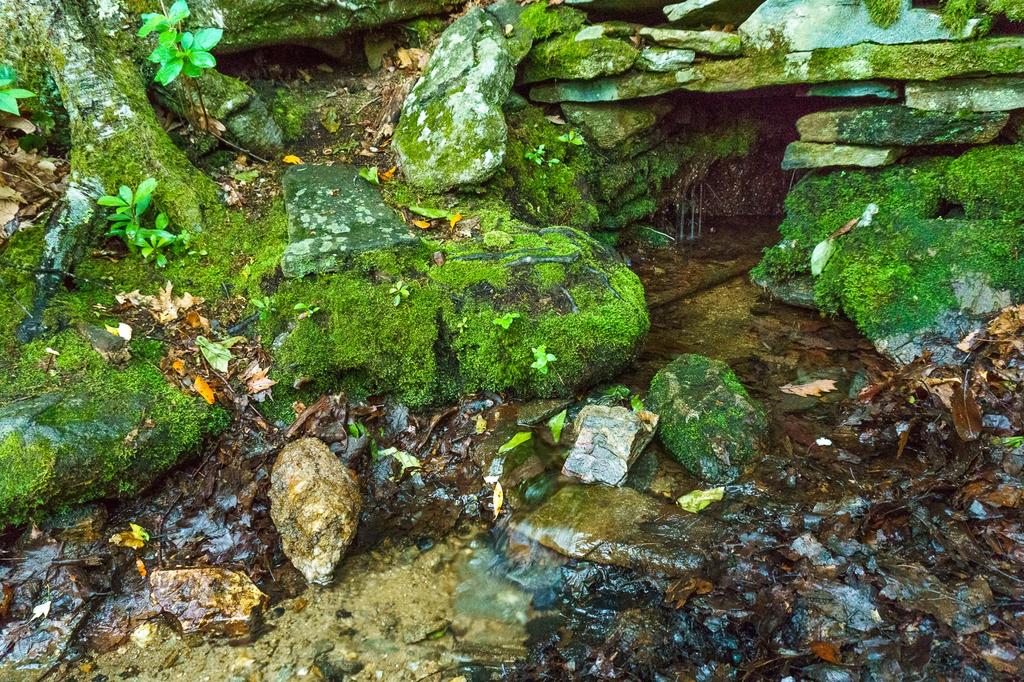Rattlesnake Lodge
At A Glance
TODO: #32 Boilerplate

2.8 mi round-trip
Difficulty Rating: 4.05 ![]()
Climb: Climbs Moderately ![]()
Tread Condition: Some Obstacles ![]()
Highest Elevation: 3720 ft
Climb Total: 550 ft
Configuration: Out-and-back
Starting Point: Parking area on Ox Cove Road 0.9 miles from the Blue Ridge Parkway
Trails Used: TODO dynamic list Mountains to Sea
Don't be concerned by the name of this hike - you won't be visiting a snake's den! In fact, your chances of seeing a snake on this hike are no higher than any other, which is to say fairly slim. Instead, you'll hike on a moderate, well-graded path to the remains of an early 20th century retreat, built by one of WNC's historically affluent and conservation-minded citizens, Dr. Chase P. Ambler, which burned in 1926.
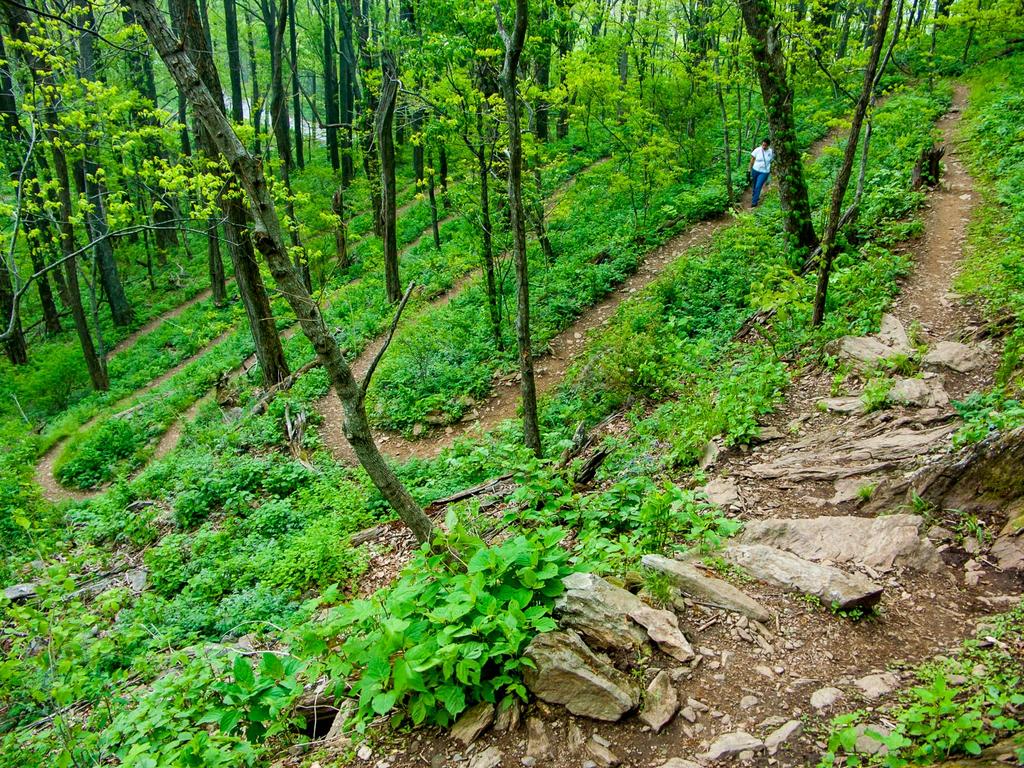
Begin the hike behind the large boulders at the back of the parking area. About 140 ft from the parking area, there is a triangular intersection; turn left onto the Mountains to Sea trail. There are no other intersections all the way to the old lodge, and you'll be following white circular blazes. You will begin by ascending the rounded end of Bull Mountain on a trail that goes through a half-dozen switchbacks for the next 0.2 mi, climbing so gradually that you'll scale all of them before you even begin to break a sweat. At the top, you can look downhill and see the path as it swings back and forth across the slope below you. Don't cut up the slope across the switchbacks!
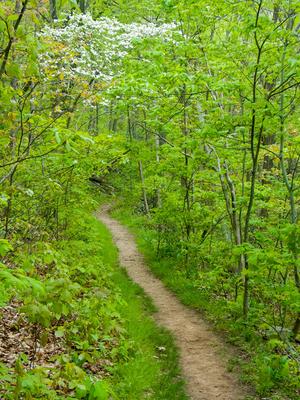
The forest here at the beginning consists of tall, straight tuliptrees and other hardwoods, with jewelweed, stinging nettle, and a wide variety of other wildflowers covering the forest floor. Poison ivy also grows just off the trail in abundance at this fairly low-elevation site, so be careful when hiking in summer months.
The trail surface is generally smooth with just a few roots and rocky sections to keep your attention. After the top switchback, the trail will round the ridge of Bull Mountain. Bull Mountain, Bull Creek and Bull Valley were all named for the last individual of the eastern variety of elk - a bull - which was shot in this valley many years ago. The elk have since been reintroduced into the Great Smoky Mountains National Park, and may once again roam these Great Craggy Mountains if they are successful and wander far enough.
This trail was built to last, and on many sections impressive dry-stack stone retaining walls still remain. Other sections go by large rock outcroppings. Look for large, leathery looking lichens growing on the rock. They resemble wilting lettuce leaves and are black on the back side. A symbiotic relationship between an algae and a fungus, these are rock tripe lichens, and they are edible in an emergency when boiled. They are rubbery when wet and crackly when dry. Feel them, but don't break them or pull them off, as they take a very long time to grow - and here on Blue Ridge Parkway property, they're federally protected.

About 1/4 mile past the switchbacks, you'll reach another switchback, to the left. In another 1/4 mile, the trail traverses a mountainside made of solid rock, and some sporadic views of the Bull Valley open up to your right. For about the next 0.3 mi past the view, you'll dip into a cove and back onto a small ridge. Notice as the forest quickly transitions into predominantly oak trees - some having twisted into grotesque forms - with an understory of mountain laurel.
Rounding the ridge, you'll curve into a slight cove and begin to climb some more. The ridgeline oak forest will gradually transition back into cove hardwoods - mostly tuliptrees - as you approach the lodge site. Some sizeable trees grow here, making for a very pleasant forest to hike through. About 0.3 mi past the ridge, you'll see the first sign that you are on the grounds of the old lodge: a building foundation (the old barn) appears on the right side of the trail.
Shortly thereafter you will reach the old swimming pool, which was fed by cold mountain water through an underground delivery system. Then the main lodge building, marked by a (now dead) huge old oak tree, stacked-stone wall and flat yard area. There's a display board showing a map and historical pictures at the corner of the old yard. It shows the main lodge building along with some of the outbuildings and descriptions of them. Look at this sign for a better view of what the old foundations scattered around you used to be, and a good history of the site.
Continue a few feet past the main building location and you will reach an intersection. The blue-blazed trail leading right meets up with the Blue Ridge Parkway at the Tanbark Ridge tunnel about 1/2 mile down the mountain. (You can come to the lodge site that way, and it makes a nice short outing for exercise, but I think the hike from Ox Creek Road is much more of a real "hike", as it's longer and a lot less steep.)
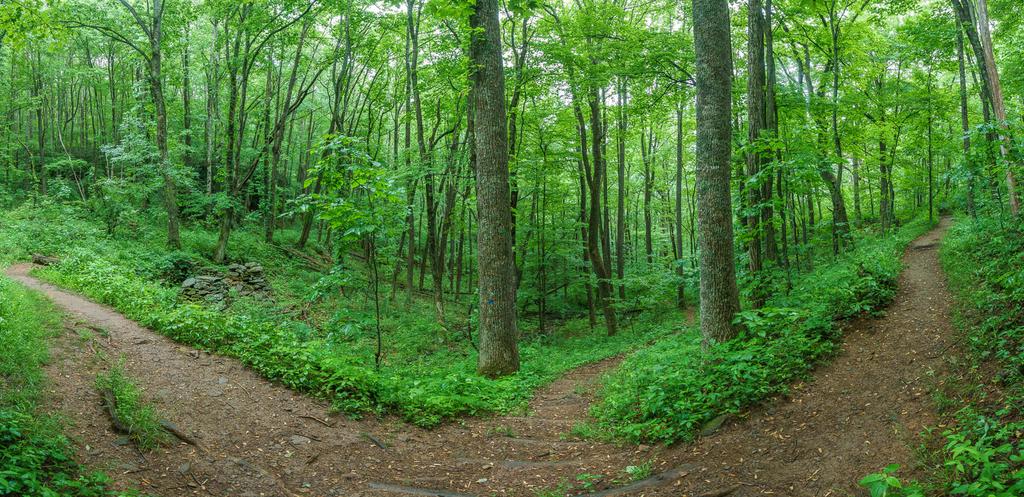
Just past the blue-blazed trail is where you find perhaps the most interesting remains of the old estate: a spring house on the left and the foundation of the old tool shed on the right.
A huge, twisted, fallen oak tree partially blocks the path to the old spring house. The crooks of its branches make for great climbing and sitting spots, so if you're in need of some relaxation - bring a book and spend some time here!
You can duck under the arch of the fallen tree to see the remains of the spring house. The spring itself is a crystal-clear circular pool rimmed with rocks. The water comes up through sand on the bottom and is always cold, and it once ran through the floor of the building to make food storage areas. Submerge your water bottle into the pool while you explore (with the lid closed, of course - the spring water shouldn't be considered safe to drink), and by the time you take it out you will see why the spring water was once used to refrigerate items such as eggs and milk!
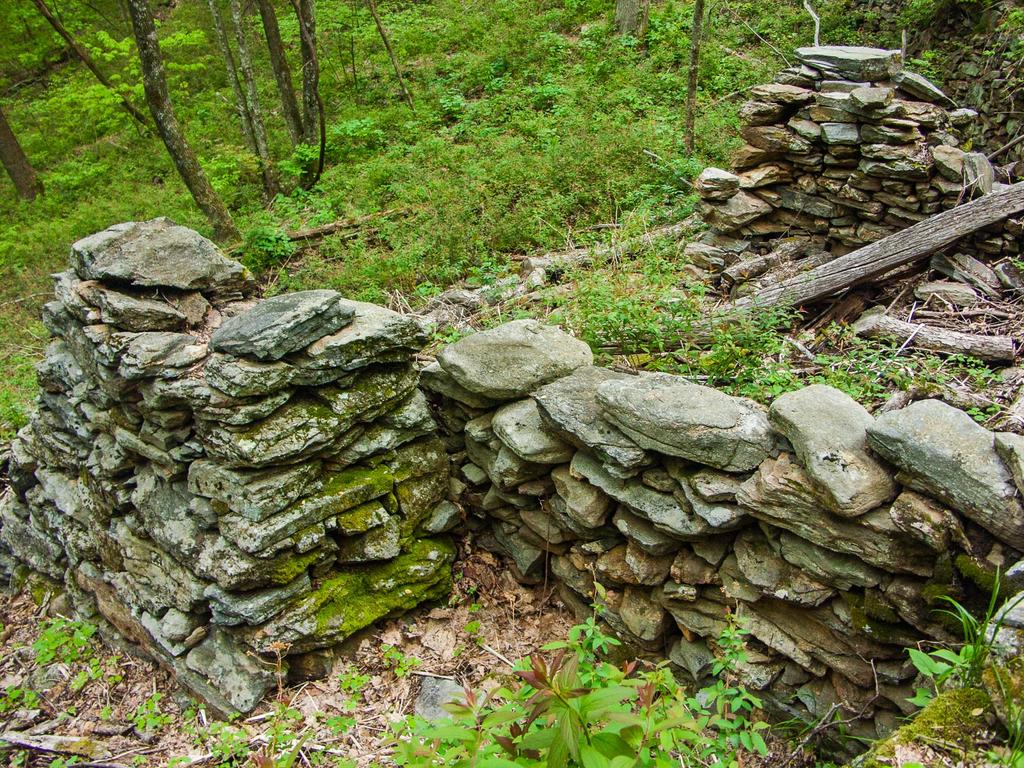
The twin pillars of rock to the right of the main trail mark the downhill corners of the toolshed. A small spring branch runs over the retaining wall here when the water is high. A hydroelectric generator in the tool shed once gave power to the lodge - the water coming not from this spring branch, but from the main reservoir located higher up the mountain. The additional elevation was needed to make enough water pressure for the lodge and generator.
Dr. Chase P. Ambler, who built the lodge as a summer home in 1903-1904, was a prominent Asheville physician and conservationist. He is credited with being one of the founders of the movement to establish Great Smoky Mountains National Park, and groups backing passage of the Weeks Act in 1911 which eventually led to the creation of Pisgah National Forest. He was chairman of a committee that eventually lead to the creation of the Carolina Mountain Club, which is still active today and has a big role in building and maintaining the Mountains to Sea Trail, making the conservation of the lodge site by the Blue Ridge Parkway and the trail running through it a fitting tribute.
For more information about Dr. Ambler and his family, the lodge, and its history, visit http://www.rattlesnakelodge.com/, a site maintained by a coalition of Ambler's descendents.
Hike Extension: the Water Loop
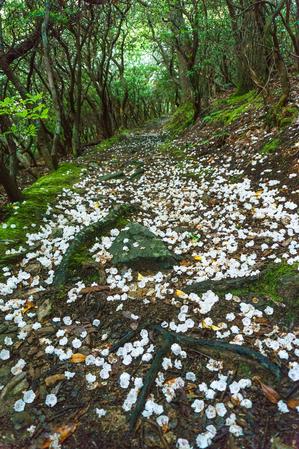
Adds 1 mi. and 350 ft. of climb
The main Lodge area normally marks the end of this hike, but you can extend the hike on a beautiful loop of trail (the water loop) and visit another spring and the lodge's old water reservoir. Continue hiking on the Mountains to Sea trail over a level course beyond the lodge.
You'll cross a small branch of Bull Creek. Beyond that creek crossing, the trail passes the site of the old corn crib, potato house, and stables (which show no visible remains anymore) and the caretaker's cabin (which does have the remains of a chimney still standing), about 0.1 mi from the main lodge. The trail then climbs south past the chimney, through a wet area, and onto a rocky section of trail beneath arching mountain laurel. At an opening in the forest, another very narrow view of the Bull Valley opens up on the right.
0.3 mi from the old chimney, the trail goes through a rocky switchback to the left and starts climbing northeast, along a rocky course that passes in and out of mountain laurel thickets.
0.35 mi past the switchback, the trail reaches another spring, on the right. The Mountains to Sea trail continues straight here; turn left, downhill, onto the blue-blazed trail. The spring once fed the reservoir located 0.1 mi downhill. The blue-blazed trail descends steeply along the old terracotta pipeline to the reservoir structure on the right. In addition to the piped spring, it was also fed by the stream at the reservoir site. Past the reservoir, the blue-blazed trail continues steeply downhill 0.17 mi to the circular spring at the lodge site and the Mountains to Sea trail.
From the lodge site, head back down the Mountains to Sea Trail toward Bull Gap to get back to your vehicle.
